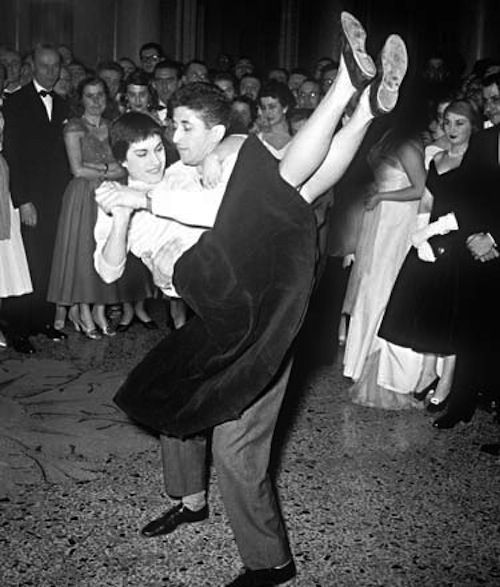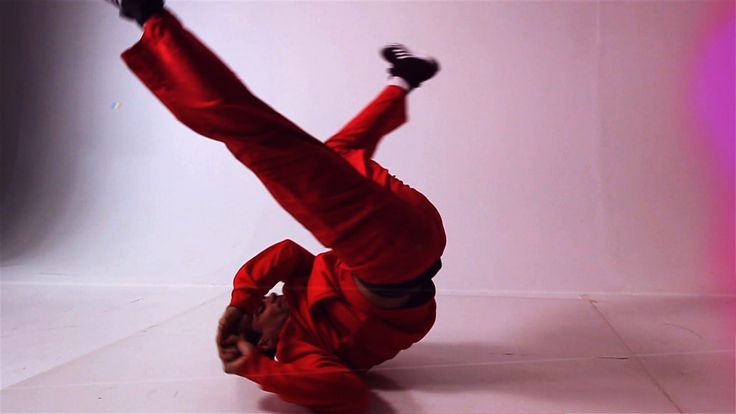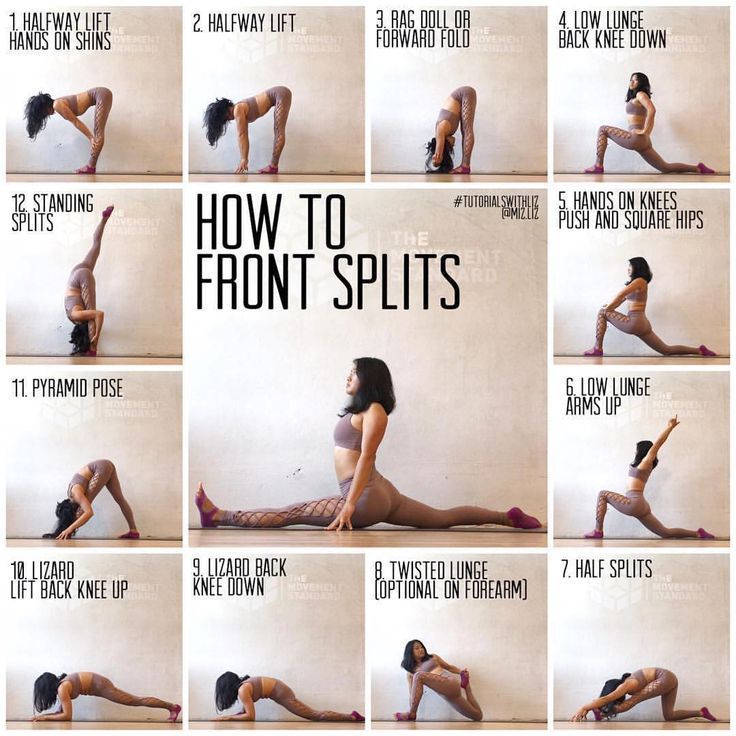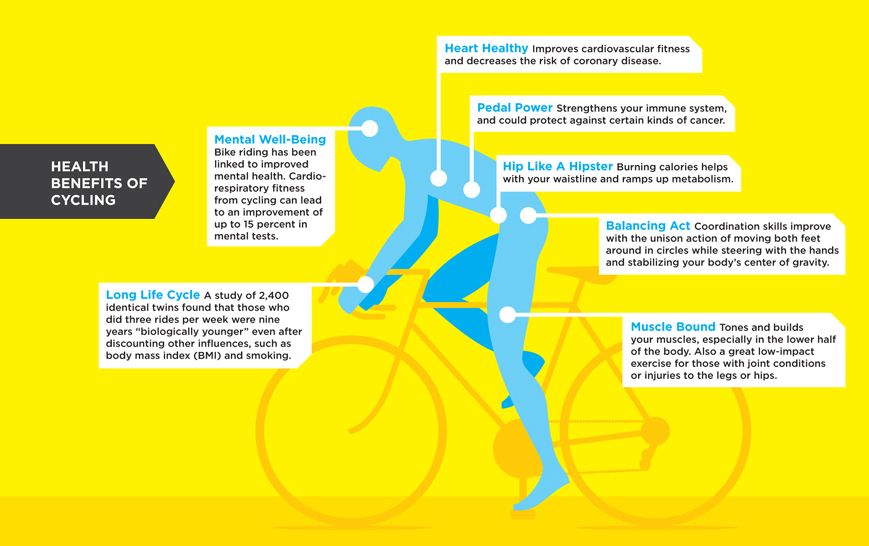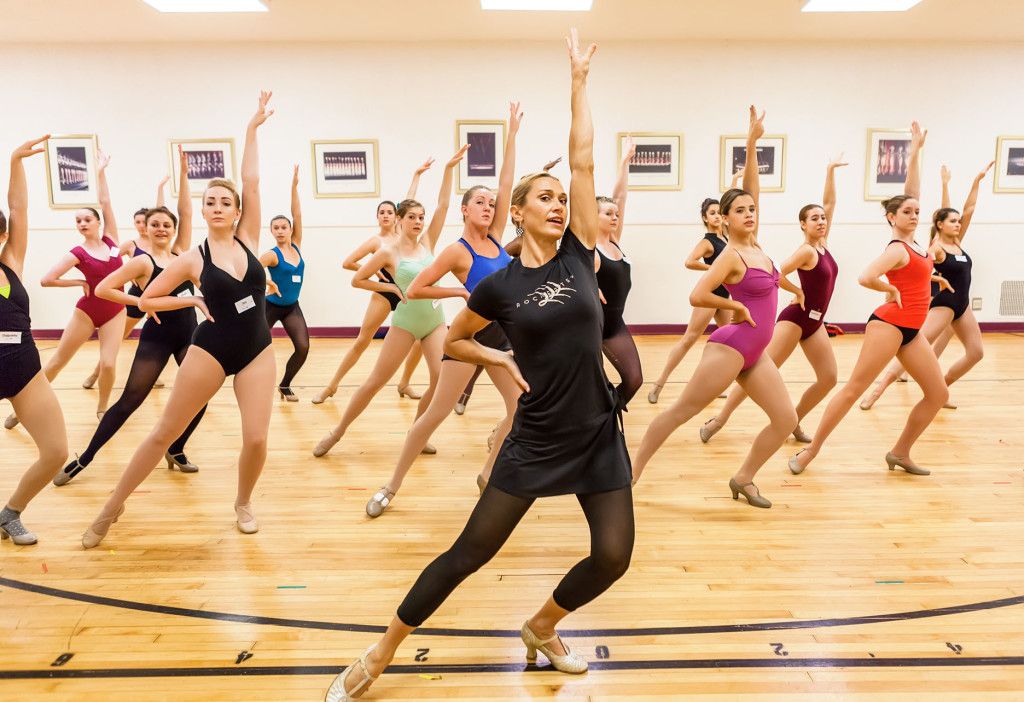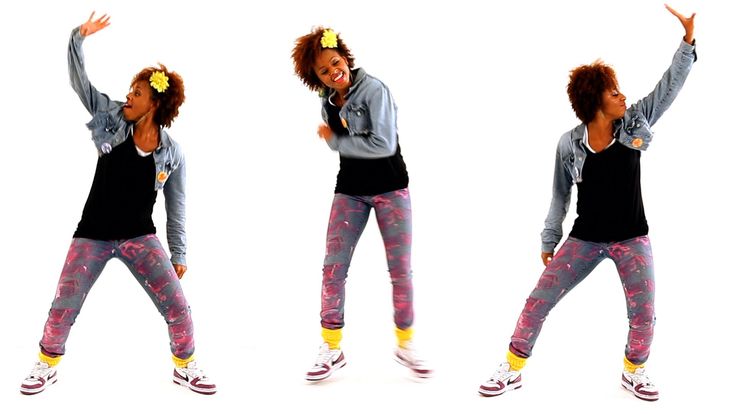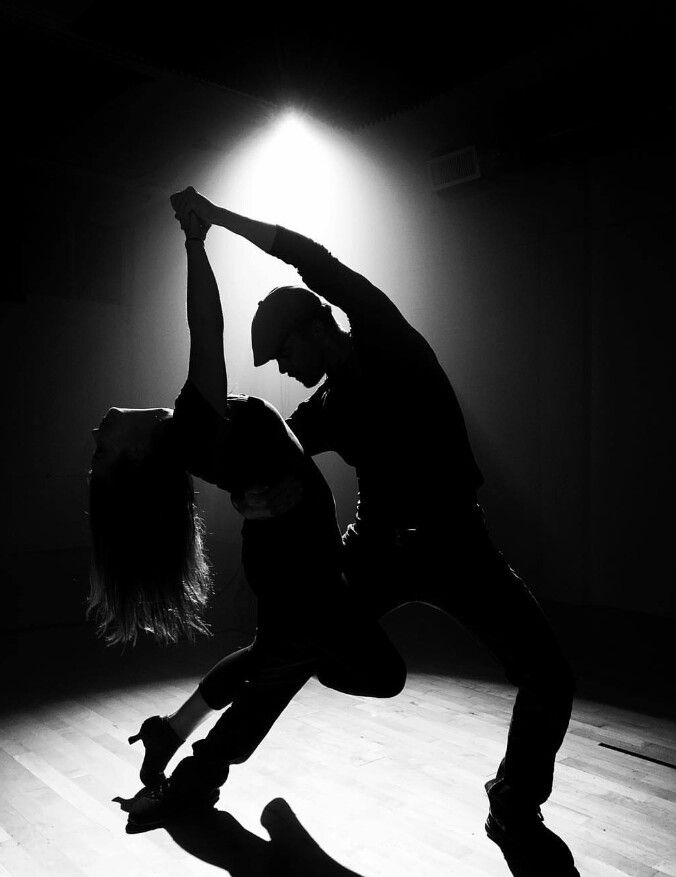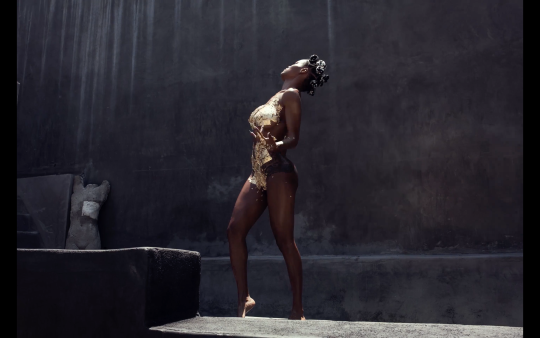Rock and roll how to dance
A Guide to Rock and Roll Dancing
Rock is heavily linked to all the big names in music, like Elvis Presley for example. The King of Rock 'n' Roll quickly rose to fame in the 1950s thanks to his ground-breaking hip moves. So much so, they even earned him the nickname "Elvis the Pelvis".
His swiveling-hips and quick feet didn't just make him a star, but even changed the way people danced. A classic for a reason, rock dancing is still one of the most popular forms of dance today. Knowing how to put some basic steps together always makes an impact on the dance floor!
Are you itching to move your feet and finally learn how to dance to rock 'n' roll?
If so, here are our tips to make this happen. Whether it's solo, with your partner or as part of a dance class, why not give rock dance a go?
Or if you're looking for another rebellious dance form, check out urban dance!
The best Dance tutors available
Let's go
What Are the Different Types of Rock Dance?
Before we begin, it is important to clarify what we're talking about. Rock actually includes several types of modern dances. Firstly, there's a difference between 4-beat and 6-beat rock. However, these are not the only variants.
Even though rock 'n' roll was born in the 50s, some rock-style dances (6-beat) had existed before. An example of which is swing dancing (called the Jive in England and Lindy Hop in the United States), bebop and 6-beat swing. They were originally danced to swing music, a more lively branch of jazz music.
You can see their influence in a lot of rock dances.
Rock dancing, born out of the music genre of the same name, is actually four-beat rock. It's actually the first dance for two with a 4-beat rhythm.
Either way, rock is a fast dance that requires rhythm. Rock music, traditionally characterised by the sound of the electric guitar, has a very fast tempo.
Today, there are essentially 4 types of rock dances:
- 4-beat Rock: Also known as four on the floor or four to the floor, this style is easier to learn than 6-beat rock.
 To dance it, you essentially have to let the arms do all the work. The legwork is relatively simple. You can tap to the beat with your hands and do arcs movements with your arms between two moves. 4-beat rock can be performed to any kind of rhythmic music.
To dance it, you essentially have to let the arms do all the work. The legwork is relatively simple. You can tap to the beat with your hands and do arcs movements with your arms between two moves. 4-beat rock can be performed to any kind of rhythmic music. - 6-beat Rock: This is the classic style of rock dance that is taught in dance schools. Learning this dance, however, is less straightforward. Legwork is very important. Dance steps are made by counting 6 beats but doing 8 rests. There are plenty of steps involved in rock dancing. It's a pretty technical dance where you need to know the steps inside out so you can dance smoothly to very fast-paced music.
- Swing Rock: Swing rock is a variation of 6-beat rock. What characterises it is its energetic leg kicks. We can say that swing rock jump lies somewhere between 6-beat rock and acrobatic rock.
- Acrobatic Rock: Unlike the other, less lively, types of rock, acrobatic rock is a sport in itself, strongly linked to gymnastics.
 Dance partners perform acrobatics, holds, lifts, etc. They are required to relax their hands depending on the move.
Dance partners perform acrobatics, holds, lifts, etc. They are required to relax their hands depending on the move.
If you like to be percussive in your dancing, you might also be interested in tap dancing!
The Basics of Rock 'n' Roll Dance
To learn 6-beat rock, currently the most widely practised, you will have to master the basic steps. This is where you will start at your first rock dance lessons near me.
Get ready to be swept off your feet ! Source: Visual HuntAs mentioned before, rock is about dancing to a 6-beat rhythm, but dancers count 8 rests during these 6 beats.
To help you find the right rhythm, you should count like this in your head (one, two, three "AND" four, five "AND" six). The "AND" lets you to do the 7th and 8th rests more easily.
Another important point is that rock 'n' roll dancers dance within an imaginary line so as not to disturb the other dancers. You must, therefore, bear this in mind and practice dancing in a limited space.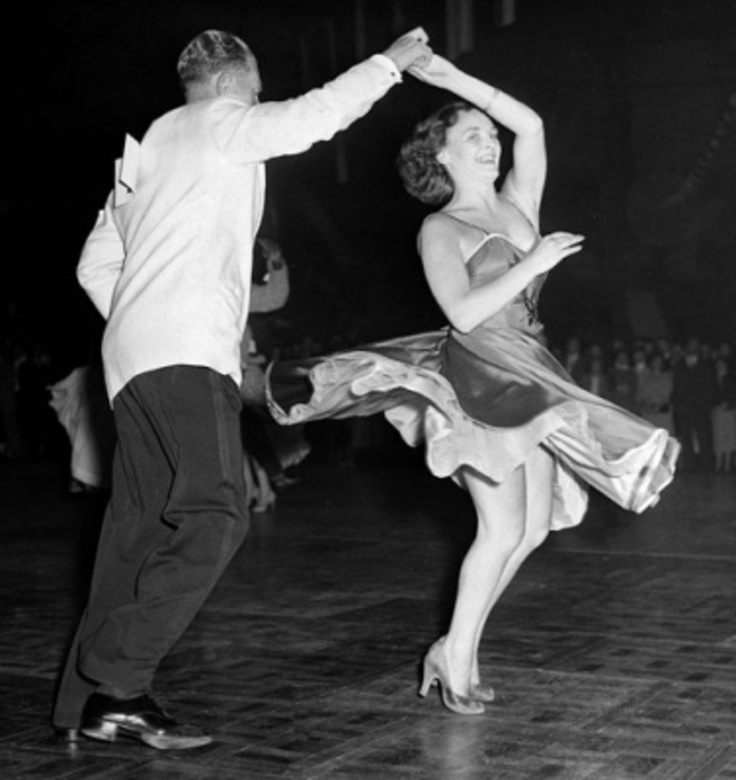
Let's go back to the most fundamental step:
- During the first 2 beats, dancers simultaneously move apart while moving their left foot back. (this is the rock step),
- During the 2 following beats, they perform a chassé to the left (taking 3 rests),
- During the last two beats, they perform one chassé to the right (with also 3 rests).
Once you've got the hang of this, you're on the right track and can progress to the next step:
- Learn the more complex moves,
- Learn how to turn your dance partner,
- Replace steps with your own footwork to add your own style to the dance,
- And much, much more...
Rock requires perfect cohesion between the two partners. It is therefore essential to train as a two as regularly as possible to dance to rock 'n' roll properly. Unlike 4-beat rock where the man leads his partner, to dance 6-beat rock, both partners must know the steps and know how to move together.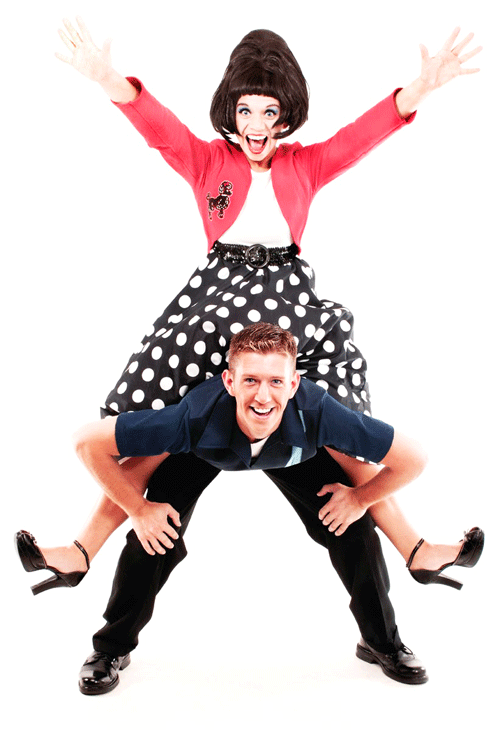
Find interesting hip hop dance classes here on Superprof.
The best Dance tutors available
Let's go
What Music to Dance To?
The best dancers seem wild, untamed; flinging limbs about as though independent of their body and smiling all the while.
Behind that seemingly carefree display, there is a crafty choreography guiding every tuck, slide and roll that takes tons of time and practice to master.
Dance technique is all good and well, but one must have an innate sense of rhythm if there is to be any hope at all of becoming proficient at executing these intricate steps to the music’s fast tempo.
The best way to find one’s rhythm is by listening to music but, with all of the selections out there, which would be the best to listen to for either the 6-beat or 4-beat dances?
Songs for 6-Beat Dancing
In the Mood: as its name implies, Glen Miller’s famous tune will put you in the proper mood for dancing – its opening bars feel like a call to get on the dance floor. Do you dare to keep still while it plays?
Do you dare to keep still while it plays?
If you watch the video, you’ll note that none of the musicians can help but move; even Mr Miller himself frantically taps his foot as he plays his slide trombone.
By contrast, the dancers themselves seem rather tame but then, with the floor so crowded and their clothing so restrictive, who would chance to execute any energetic moves?
Yes, clothing plays a part in your ability to dance and the spectacle you create; we’ll talk about that a bit further on in this article.
Sing, Sing, Sing by Benny Goodman is of a similar vein; it provides a long intro prior to the whole orchestra joining in. Here again, physical restraints may be necessary to keep yourself from moving along, driven by the energy of this ditty.
Note: nice drum solos throughout the tune provides dancers ample opportunity to showcase their special moves individually before joining up again.
Moving ahead a few years, to a time when musical influences were melding and dancers were getting more inventive, more energetic and more daring with their moves.
In solidarity with them, you might find that:
- Danny and the Juniors is inviting you to dance At The Hop; their frenzied beat provides an excellent backdrop to showcase dancing talent.
- The Everly Brothers tried to Wake Up Little Susie
- Little Richard enticed us with Tutti Fruitti
- Bill Haley and his Comets challenged us to Rock Around the Clock
- They also intoned what could have been an advert for a jalopy: Shake, Rattle and Roll
As mentioned before, Elvis Presley produced a trove of music to dance to.
Jailhouse Rock never fails to cause dancing pairs to pogo their way to the dance floor, flared skirts and beribboned hair flying... for a good reason!
It’s not just the visual of The King swinging his pelvis around in time to the beat that spurs dancers on; the whole song is simply irresistible!
In fact, this song is unusual in that the lyrics determine the 6/6 beat rather than the drums so, instead of listening for each downbeat, you should focus on Elvis’ rising and falling tones while he sings to get your timing down.
Another great Elvis song to dance to is All Shook Up. Here again, the lyrics are easier to follow than the beat... possibly because of the greater emphasis given to them than the backing music.
Hound Dog, our third Elvis pick could be a bit slower paced, depending on which version you listen to but it is still a great tune to dance to, especially if you’re just starting to learn how to dance to rock music.
Find interesting ballroom dance lessons here on Superprof.
Although the lady's shoes are not ideal, the skirt is perfect for dancing! Source: Pixabay Credit: Scott WebbTunes to Practice 4-Beat Dancing
The disco era was short-lived; some say mercifully so. Nevertheless, that brief span turned out some of the best 4-beat dance music ever recorded.
Prime among them, some might say that the very voice of the era was projected by the Brothers Gibb, better known as the BeeGees.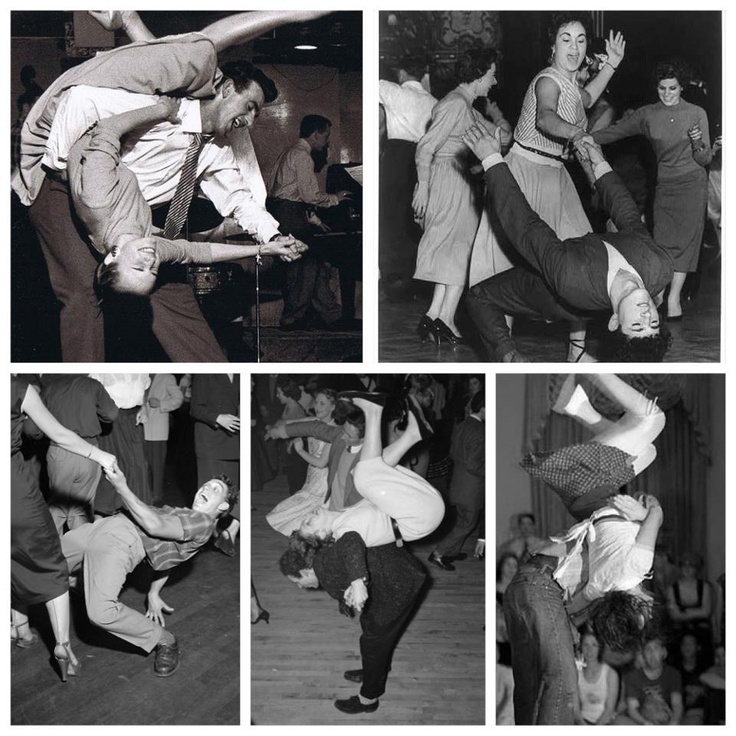
Saturday Night Fever, superficially a film about how liberating dancing can be is filled with 4/4 beat BeeGee tracks you could learn how to dance and practice your moves to.
Stayin’ Alive is a great song for more reasons than one: not only is it the anthem of the disco era but it maintains the perfect tempo and beat to perform CPR to!
Other BeeGee tunes on that soundtrack include Night Fever and Jive Talking.
That soundtrack being the backdrop to a movie about dance, the type of dance where your footwork is less important than your display – a factor essential to 4-beat dancing, you could practice your moves to just about any cut that record offers.
Interesting movie trivia: John Travolta and his dance partner rehearsed one of their dance scenes to a different song altogether but the movie producers could not afford to buy the rights from the original singer so they dubbed in a BeeGees song that had approximately the same tempo.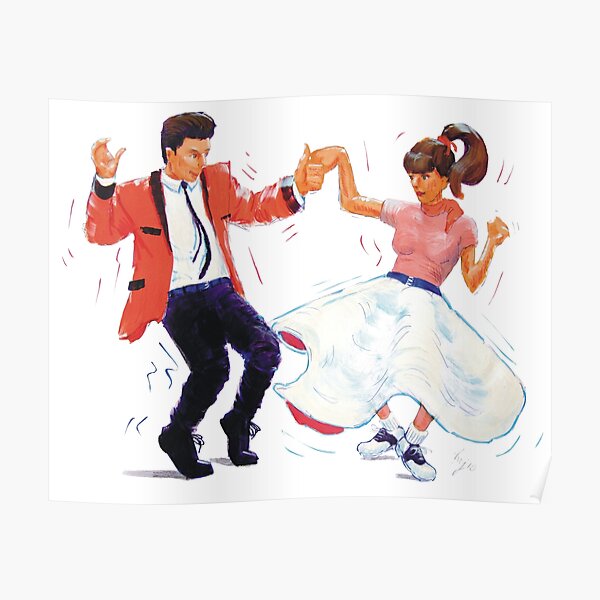
The Gibbs brothers rocketed to worldwide fame while the original song’s performer to this day remains relatively unknown outside of America.
Boz Scaggs lost potentially millions of dollars in royalties by not licensing the use of his song, Lowdown, in the film. On the other hand, you could benefit from his artistry by working your groove to his music!
One feature common to all of these songs is what is called ‘the money beat’: a dum-DUM,dum-DUM drum score that Michael Jackson was particularly adept at dancing to.
In fact, his song Billie Jean epitomises that 4/4 beat as well as the upper body movement with minimal footwork that characterises this type of rock dancing.
“But all of those songs are decades-old!”, you cry.
For more modern and massively fun – songs with a 4/4 beat to dance to, you might try Justin Timberlake’s Can’t Stop the Feeling.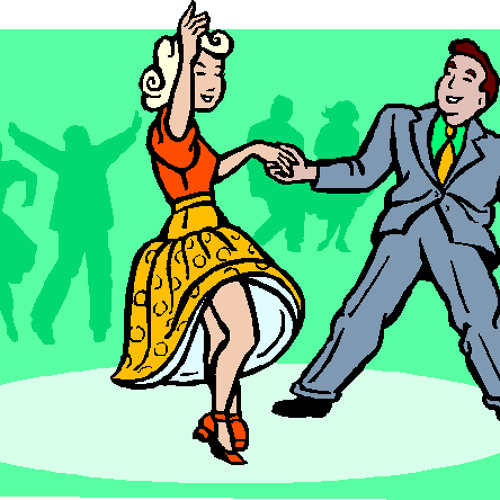
If you watch the video to Justin’s song, you will hear a drum intro that acts as a call to the dance floor. You’ll see minimal footwork and lots of upper body movement – in fact, some of the dancers’ feet aren’t even shown! Everyone dances solo until the end, when they all get together for a synchronised dance under the bridge.
By contrast, Shut Up and Dance by Walk the Moon is shown danced by a couple. Still, it embodies the same characteristics – mellow song intro, minimal footwork, lots of upper body moves and the 'money beat', albeit accelerated.
If you were ready to try moving a bit faster, this would be a great song to do it to!
Obviously, there’s lots of music out there you can learn rock dancing to; your dance teacher will most likely introduce you to more great selections!
Find interesting online dance classes here on Superprof.
Learn Rock Moves by Taking Classes
To learn to dance quickly, the best way is to enlist the help of a dance teacher. You can do an intensive rock dancing course to learn the basics or take dance classes over a long period of time. Regular practice at a specialised dance school will allow you to improve quickly. Moreover, you will avoid common pitfalls with the guidance of your dance instructor. A professional dancer will guide you in your learning, whatever your level. But where do you find a suitable class? Try searching the web for 'dance classes near me'. Or if 'dance classes near me' doesn't work for you and want to search for a particular location, then why not try 'dance classes glasgow', for example. Failing that, if you want to search for a style of dance like Rock and Roll or pole dancing classes, then give one of them a search on your computer.
You can do an intensive rock dancing course to learn the basics or take dance classes over a long period of time. Regular practice at a specialised dance school will allow you to improve quickly. Moreover, you will avoid common pitfalls with the guidance of your dance instructor. A professional dancer will guide you in your learning, whatever your level. But where do you find a suitable class? Try searching the web for 'dance classes near me'. Or if 'dance classes near me' doesn't work for you and want to search for a particular location, then why not try 'dance classes glasgow', for example. Failing that, if you want to search for a style of dance like Rock and Roll or pole dancing classes, then give one of them a search on your computer.
Having a solid foundation beforehand is essential for rock dancing and helps you advance from beginner to intermediate level quickly. Once you've mastered the basic steps and learned a few simple moves, you will be able to dance with ease and continue to progress while gradually refining your dance style.
Rock 'n' roll dance has countless moves and variations. Everyone can add their personal touch to the dance.
To take rock lessons, look if there are any of the following near you:
- Dance schools,
- Dance associations that offer dance classes in ballroom or rock 'n' roll,
- Private dance teachers.
Taking rock lessons at a dance school is perfect if you want to learn and make friends at the same time.
This is a good solution if you want to take classes year round and practice dance regularly.
If you'd prefer to do a one-off dance lesson, opt for an intensive rock 'n' roll dance course or individual dance classes to prepare you for a special event such as a bachelor party or the first dance at your wedding. Make sure to ask if this kind of lesson is available.
For personalised dance training, private dance lessons are a great option to take into account.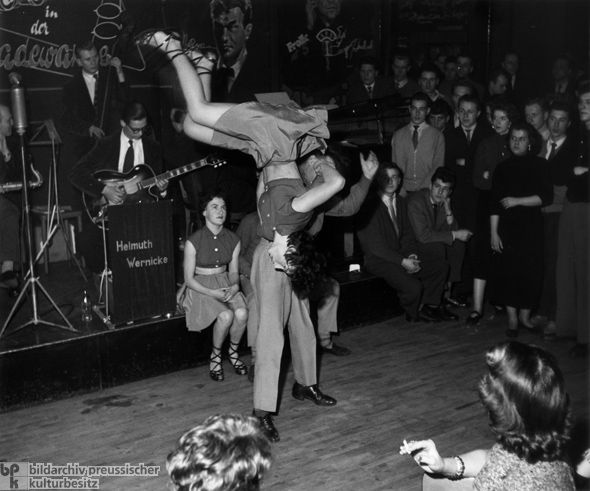 With a private teacher, you will be able to progress at your own pace and learn according to your level.
With a private teacher, you will be able to progress at your own pace and learn according to your level.
For example, with Superprof, you can find lots of profiles of dance teachers based throughout the UK.
Rates vary depending on the teacher, but also on the student. There are classes suitable for everyone's budget.
Hourly rates vary from £15 to £60. Some teachers come to your home while others give classes from their own dance studio.
What to Wear on the Dance Floor
Choreography (or the lack thereof) and rhythm are technical aspects of dancing to rock music but presentation is everything!
Thus your wardrobe choices should be dictated both by the type of dancing you do and if you’re dancing with a partner - your choice of outfit should match, not clash.
Tops
If you’re dancing to 6-beat rock, the focus is less on your upper body than on your legs and feet.
Thus, a close-fitting shirt or blouse would be suitable, possibly with flared sleeves – but they should be cuffed to prevent an accidentally missed grab of your partner’s hands or arms, or worse: getting tangled up inside excess material! This applies to gentlemen as well as ladies.
For the more informal 4-beat dances, looser fit jerseys or cotton garb would work well, perhaps also with flared sleeves to better show off your arm movements.
Below the Waist
Here again, inverses hold true: if you’re dancing 6-beat, a knee-length skirt with a bit of a flare would be in order; one that moves well and accents your hip and step movements.
For the gentlemen, close fitting (but not restricting) slacks would be the order of the day; the better to show off your intricate footwork.
For 4-beat dancing, what you wear on your bottom half is not as important. Provided it is comfortable and breathes well – so that you don’t overheat as you exert yourself, pretty much anything you choose to wear would work.
For any type of partner dancing, it is recommended to coordinate your outfits to give a visually appealing presentation!
Dancing Shoes
Whereas acrobatic dancing fairly demands a shoe whose sole will ‘grab’ the dance floor, in 6-beat dancing, you need the opposite effect.
Slick-soled shoes are necessary to give the impression of gliding across the dance floor, so you should shop for a leather-soled shoe.
Ladies, you would need a low heel or even a no-heel shoe – certainly a lower heel than for ballroom dancing! The important criteria is that your shoes are sturdy enough to withstand vigorous use and will remain securely on your feet during your kicks, flips and twirls.
That is why so many women’s dance shoes have an ankle strap or one that goes over the bridge of your foot!
Selecting footwear for 4-beat dancing is, of course, easier. As there is little footwork involved in this type of dancing, male and female dancers may even wear their most comfortable trainers!
Find interesting swing dance lessons near me here on Superprof.
Be careful not to step on your partner's feet at the start. Source: Visual Hunt.Learn to Dance to Rock 'n' Roll Solo
You want to learn rock moves, but it's just you?
It is, in fact, possible to learn to dance without taking online Zumba classes. For this, you have a number of options, which can also help you in your approach:
For this, you have a number of options, which can also help you in your approach:
- Asking your friends and family: think carefully, you're bound to have know someone who can dance to rock 'n' roll well? Start by asking them if they would showing you a thing or two,
- Learning to dance at home has never been easier with online videos and websites. On the internet, it's now so easy to find step-by-step tutorials to learn rock dances. They are available for all levels: beginner, intermediate and expert. You can find free online lessons on websites such as Learn To Dance,
- Attending your local rock night: remember, to learn to dance, you have to dance. Imagine going to a dance party or nightclub and showing off your rock and roll dance moves. You will actually be able to put the steps you've learned from online videos into practice. If you have a good dance partner, you'll not only improve but you'll enjoy yourself,
- Downloading mobile apps will also allow you to practice your steps at home or away or, with Map Dance, for example, you can easily find places to go dancing wherever you may be.
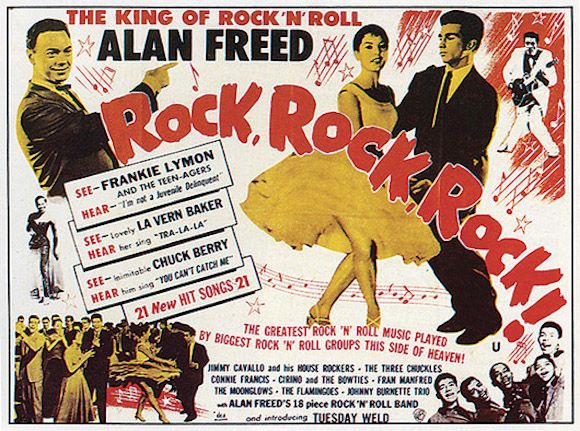
To learn rock dancing, any of the above methods will be helpful. From London Salsa classes to learn the basics of ballroom dancing, the most important thing is to have fun.
Your passion for dance may potentially lead you to try a new style such as the Argentine tango, Zumba, the waltz or even hip-hop!
Or, are you now too tempted by acrobatic rock?
Find interesting dance classes for toddlers here on Superprof.
Dancing in the 50s
Dancing in the 50sRock and Roll dancing is actually swing dancing. East Coast Swing, West Coast Swing, Jive and Jitterbug, all came to be known as some type of Rock and Roll dancing, mostly thanks to the movie industry and the general media. So in reality, the music was Rock and Roll, and various forms of swing were used to dance to it.
From it's beginnings, rock and roll has been associated with dancing. Teen dances in the '50s fell into two categories: slow and fast. With slow dances couples held each other close and moved slowly around the dance floor in a type of box step. Fast rock and roll dances usually took the form of the Jitterbug, a holdover from the big band swing of the '30s and '40s. Again couples touched, if only by hand, and engaged in a variety of fast steps that could include considerable virtuosity and gymnastics.
Teen dances in the '50s fell into two categories: slow and fast. With slow dances couples held each other close and moved slowly around the dance floor in a type of box step. Fast rock and roll dances usually took the form of the Jitterbug, a holdover from the big band swing of the '30s and '40s. Again couples touched, if only by hand, and engaged in a variety of fast steps that could include considerable virtuosity and gymnastics.
The rock and roll music of the fifties was extremely easy to dance to because it had a steady, straight forward beat. The extraordinary uninhibited nature of the music prompted even the most insecure or self-conscious listener to feel they could join in on the action.
The dancing that evolved in response to rock and roll is of black origins. The link between the music and the movement, the music's commanding ability to make the listener get up and dance, are a sign of its black origins.
"Neither the music, the song, nor the dance stands alone in African-American culture"
Benita Junta Brown
While the Jitterbug has clearly traceable roots in African-American culture, many other dances that teenagers created to rock and roll songs during the fifties were invented by blacks.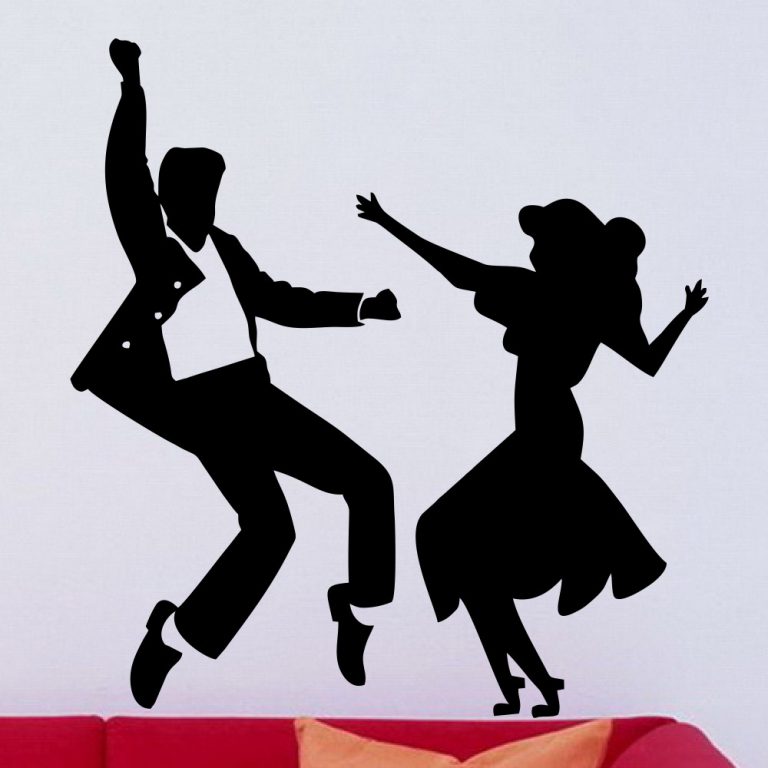 Though whites may have popularized them, the dances were often based on steps and body movements of blacks.
Though whites may have popularized them, the dances were often based on steps and body movements of blacks.
Juke Joints
Many of the places teens hung out at in the fifties, such as ice cream parlors, bowling alleys, roller rinks and diners had jukeboxes with the latest rock and roll records. These jukeboxes were coin operated that played the 45 rpm records that the teen selected. Someplaces, such as a restaurants, had a small, compact tableside device that teens could use the select songs to here as the waited to place their orders and/ or as they ate. Juke joint is not to be confused by the jook joint which was a black music and dance places that emerged just after the Civil War, usually in the rural South.
Sock Hops
One of the places that rock and roll dancing developed was at the local sock hop.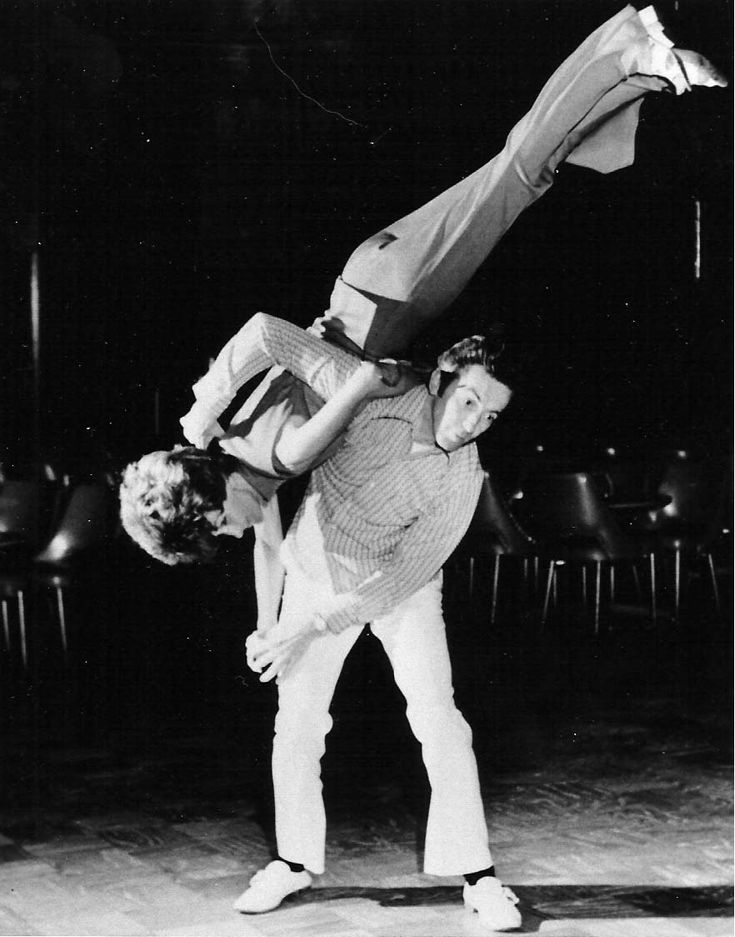 The name was given because dances were often held in the local school gyms. Since hard-soled shoes weren't allowed to be worn on the gym's varnished wooden floors, the dancers had to remove their shoes and dance in their shoes. Thus the term became synonymous with record hops and was widely used for any of the 50s rock and roll dance parties. It was here that allowed the creation, observation and practice dances. It is also why in their earliest forms dances were highly regionalised.
The name was given because dances were often held in the local school gyms. Since hard-soled shoes weren't allowed to be worn on the gym's varnished wooden floors, the dancers had to remove their shoes and dance in their shoes. Thus the term became synonymous with record hops and was widely used for any of the 50s rock and roll dance parties. It was here that allowed the creation, observation and practice dances. It is also why in their earliest forms dances were highly regionalised.
Slow Dancing
The dance they did was a slow version of the Slow Fox Trot. Eventually fifties teens did away with almost all of the Fox Trot's traveling figures and foot patterns. They simply stood in place, holding tight to their partner and gently swayed stepped forward, to the side, back and to the side in a box pattern.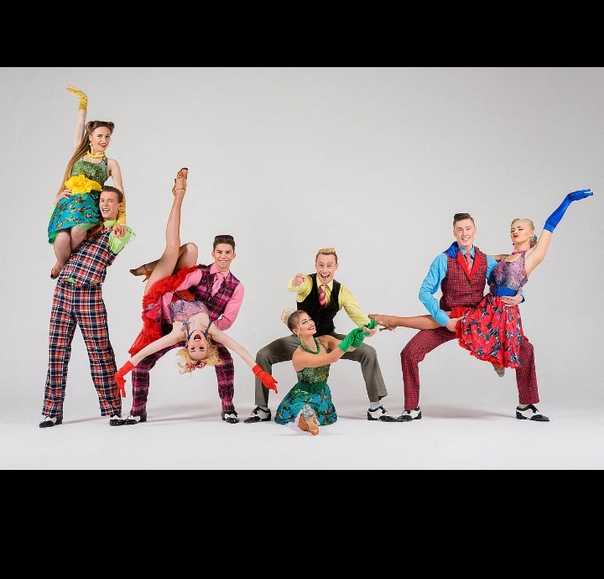
The guy put his right hand around the girl's waist. His left hand lightly held hers at shoulder level. The girl's left hand was on his shoulder, while her right hand was clasping his.The guy lead going forward, while the girl followed, moving backward.
The Fish
The Fish was was an updated version of a dance from the early 1900s, the Slow Drag. in which couples would hold on the each other and grind against each in one spot. When stepping forward forward, the dancer was to drag the left foot. When stepping back, it was the right foot that would be dragged. Moving sideways to the right, the dancer would drag the left foot and and moving sideways to the left, the dancer would drag the left foot.
Boogie Woogie
As a dance style, Boogie Woogie encompassed any kind of swing dancing done fast and was also called "Jump Swing." The Boogie Woogie was usually danced to blues and Boogie Woogie music with fast tempos. This type of fast dancing included jumps, hops, stomping, and even flying feet, all done at considerable speed.
This type of fast dancing included jumps, hops, stomping, and even flying feet, all done at considerable speed.
The Bunny Hop
The Bunny Hop became a classic party dance in the early 1950s. Originally, it was danced to the Bunny Hop by Ray Anthony, which came out in 1952 and include all the instructions for what to do. To do the Bunny Hop, all you need is energy to hop away and preferably some people to form a conga line with.
Jitterbug
Jitterbug is an offshoot of the Lindy Hop, a high energy athletic dance that was started by blacks at Harlem Savoy Ballroom in the late 20s. The dance developed in the thirties as competing couples tried to outdo each other with more challenging moves with awe-inspiring speed and energy. In the thirties "jitterbug" was a term that given to the raucous swing music fans. In the early forties, jitterbug was applied to the modified version of the Lindy that people were dancing to the latest swing tunes.
The Jitterbug is a spot dance meaning it does not travel around the floor. The basic step is a syncopated two-step that accentuates the off-beat, followed by a "breakaway" which is the characteristic feature of the dance. It is during the "breakaway" that the dancers get to show off their original moves.
The Jitterbug makes use of three versions of a six-count basic step. Though it is always in a 2/4 or 4/4 time.
The term "jitterbug" was originated in the early '30s, and eventually, it came to be use as an umbrella term to refer to swing in general. Movies like "Rock Around The Clock," "Rock, Rock, Rock," and the "Girl Can't Help It" include Jitterbug dancing in them. By the late 1950s, youth began calling fast dancing by the name. It's easy to learn to do the Jitterbug.
The Jitterbug Basic is counted in six counts of music, but there are only four steps.
How to do the Jitterbug
1) Begin facing your partner with your hands clasped gently in front of you. 2) Press into one another's hands to propel your bodies back. 3)The lead should step back with his left foot, while the follower steps back with her right. 4. Pull one another's hands gently to move closer together, stepping forward with the opposite foot. Together, steps two and three are called the rock step. 5) The leader steps and leans to the left while the follower steps and leans to the right. 6) The leader steps and leans to the right while the follower steps and leans to the left. Repeat steps two through five as many times as desired at a pace of quick, quick, slow, slow
2) Press into one another's hands to propel your bodies back. 3)The lead should step back with his left foot, while the follower steps back with her right. 4. Pull one another's hands gently to move closer together, stepping forward with the opposite foot. Together, steps two and three are called the rock step. 5) The leader steps and leans to the left while the follower steps and leans to the right. 6) The leader steps and leans to the right while the follower steps and leans to the left. Repeat steps two through five as many times as desired at a pace of quick, quick, slow, slow
The Jive
The Jive, like the Jitterbug, is a variation of swing dancing. Its origin is American, it has strong Latin and African American influences, and it is known for being fast and fun. The Jive is now one of the official Latin American dance forms in the competition arena, and it is danced the world over in rockabilly joints.
How to do the Jive
The basic Jive dancing step consists of eight weight changes in six beats.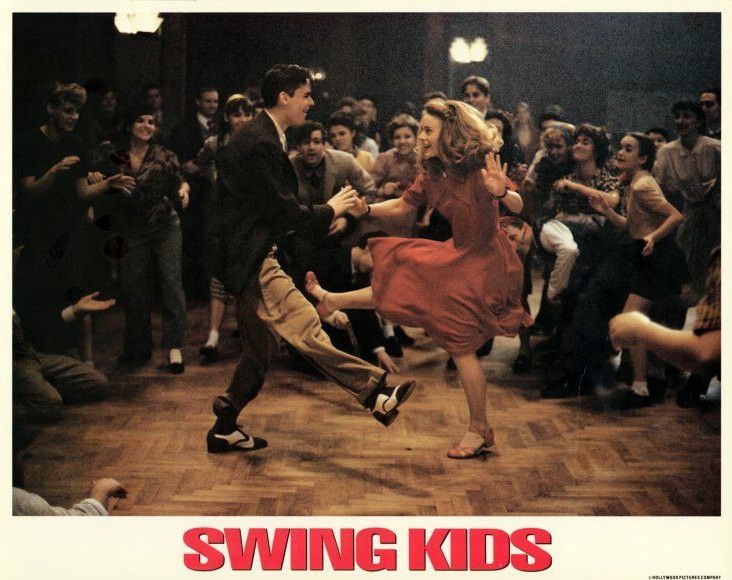 Whoever is leading performs a rock step (one foot step back, other foot replace it) for the first two counts. Then, the couple chasses to the left for counts 3 and 4. Chasse to the right for counts 5 and 6, and then you are dancing the Jive! The dance is simple and jovial, and it is a favorite in many American competitions and exhibitions today.
Whoever is leading performs a rock step (one foot step back, other foot replace it) for the first two counts. Then, the couple chasses to the left for counts 3 and 4. Chasse to the right for counts 5 and 6, and then you are dancing the Jive! The dance is simple and jovial, and it is a favorite in many American competitions and exhibitions today.
The Cha-Cha
Originally hailing from Cuba, the Cha-Cha is danced to many more songs than just Latin music. The basic step is easy enough; the follower simply mirrors the steps of the lead.
How to do the Cha-Cha
Standing in a closed dance frame, the lead steps forward with the left foot, shifting weight onto it Immediately shift the weight back onto the right foot, doing what's
known as the "rock step" Bring the weight back up to the left, quickly bringing the right foot up next to the left Do another quick weight shift to the right foot, then back to the left (this is the "cha-cha-cha") At the original tempo, shift your weight onto the right as it steps forward Rock back onto the left, and bring the right foot back for another fast "cha-cha-cha" step
Dancers repeat this basic step in between several more complex moves that can be executed by the dancers. Like the other 50s dance moves here, the Cha-Cha can be a dance unto itself or just a quick move to put into any choreography where the music fits.
Like the other 50s dance moves here, the Cha-Cha can be a dance unto itself or just a quick move to put into any choreography where the music fits.
Hand Jive
The Hand Jive the most clear cut example of the synchronized, choreographed dance of the fifties and perhaps the easiest to do was the Hand Jive. The hand Jive can be done standing up, facing a partner. standing one assumes a slightly hunched over, bent knee position so that your thighs and shoulders are relatively close. This also the makes it easier to do the quick moves.
This dance was made most famous by the movie Grease. The original song was created by Johnny Otis and enjoyed its greatest popularity during the summer of 1958. You can see Otis singing it on YouTube along with his dancers. While they do more complex moves, the basic hand jive can be done using a simple jazz square foot movement accompanied by the following hand motions:
The Hand Jive consists of a series of small gestural actions performed in a steady rhythm, with each move falling directly on the beat of the music.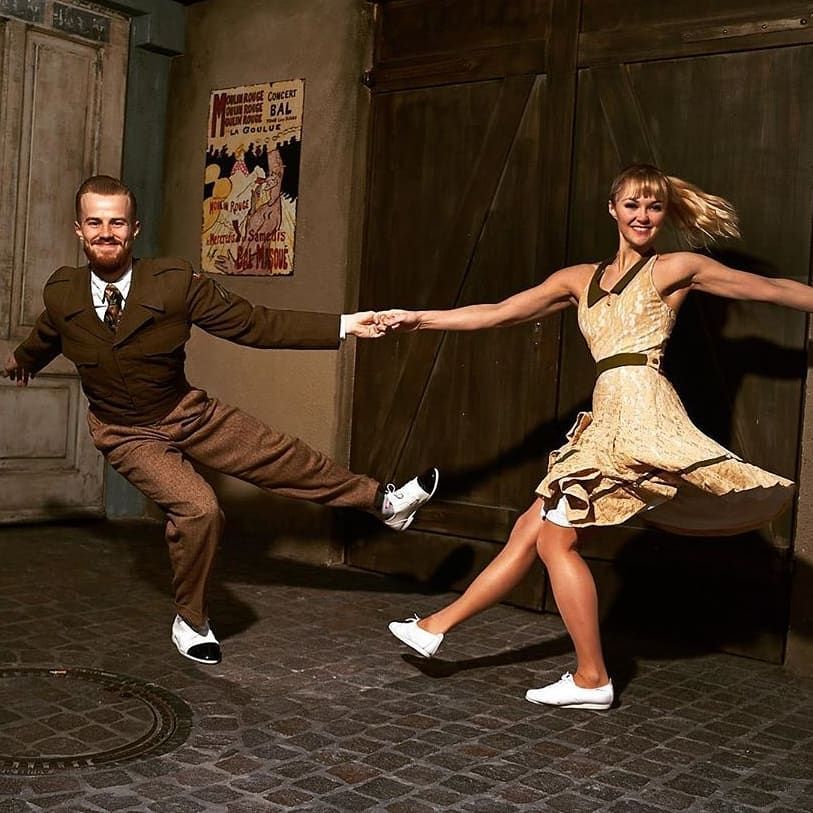
How to do the Jive
1) Crouch down and slap your palms against your thighs twice. 2) Cross your palms over and under each other, like a referee announcing "safe!" 3) Make your hands into fists and pound them on top of each other, twice each. 4) Use your fingers to touch elbows, one at a time "Hitch-hike" by making fists with your thumbs sticking out and pointing them over your shoulder, again twice on each side
The Madison Line Dance
Dancing the Madison in the Broadway musical Hairspray
Photo Courtesy Joan Marcus/Photoplay
The most intricate of the fifties choreographed group dances was the Madison. It is generally agreed that the Madison originated with Midwestern blacks and was appropriated by white teens nationwide.
In the late 1950s and early 1960s, the Madison line dance gained great popularity. A simple-to-follow dance line and steps that were called for the dancers made it a huge success.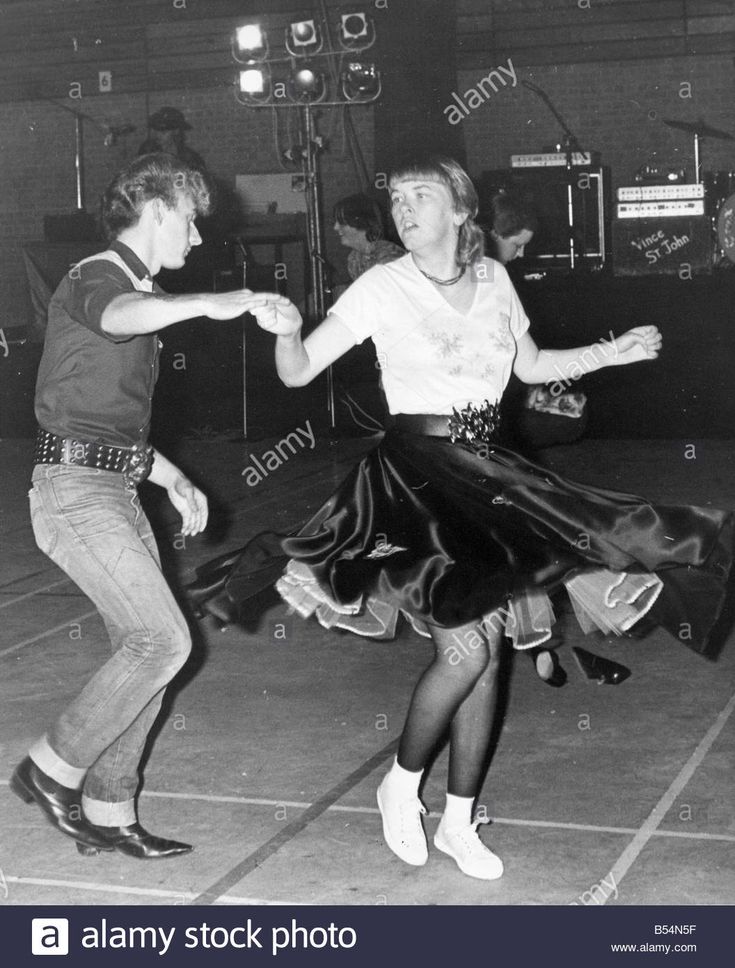 The Madison craze spawned several recordings of songs specifically made for the dance with Al Brown's "The Madison" and Ray Bryant's "Madison Time" competing neck in neck on Billboard's Top 40. It was so popular that in 1988 the movie Hairspray featured the dance, and it has become one of those recurring features in movies and series depicting 1950s popular dances.
The Madison craze spawned several recordings of songs specifically made for the dance with Al Brown's "The Madison" and Ray Bryant's "Madison Time" competing neck in neck on Billboard's Top 40. It was so popular that in 1988 the movie Hairspray featured the dance, and it has become one of those recurring features in movies and series depicting 1950s popular dances.
How to do the Madison
The Madison is done in parallel, horizontal lines with everyone facing forward. Done to music with a 4/4 meter it consists of a six count basic step that is interspersed with idiosyncratically variations that are preformed in response to the caller. The basic step includes six distinct movements, each done on one beat of the music a touch of the left foot as it reaches diagonally across the right, a touch of the left foot out to the left side, another touch of the left foot diagonally across the right, a step forward on the left on the left touch, a touch of the right foot directly next to the left and a backward step on the right. Hand claps or finger snaps are sometimes added on the fifth count
Hand claps or finger snaps are sometimes added on the fifth count
The Slop
The men would put there hands in their pockets and yank up their pants legs as if showing off their shows. It was danced to a moderate tempo and was done without touching your partner. basic step featuring a shoulder dip and backward diagonal kick, as well as variations that involved swiveling on the balls of the feet and twisting around done by crossing one foot behind the other and making a complete turn. It wasn't danced on Bandstand
Philadelphia Dances
Just because many new dances were introduced on Bandstand, kit is not correct to assume that those dances were created by Bandstand teens. Many of the Bandstand teens got a lot of there moves, steps and styles from watching black teens. Black teen dancing in Philadelphia could be watched on the Milt Thomas show, often described as the black Bandstand. Originally broadcast from Wilmington, Delaware before it moved to a studio in Suburban Station in center-city Philadelphia, it was named after its host, Mitch Thomas.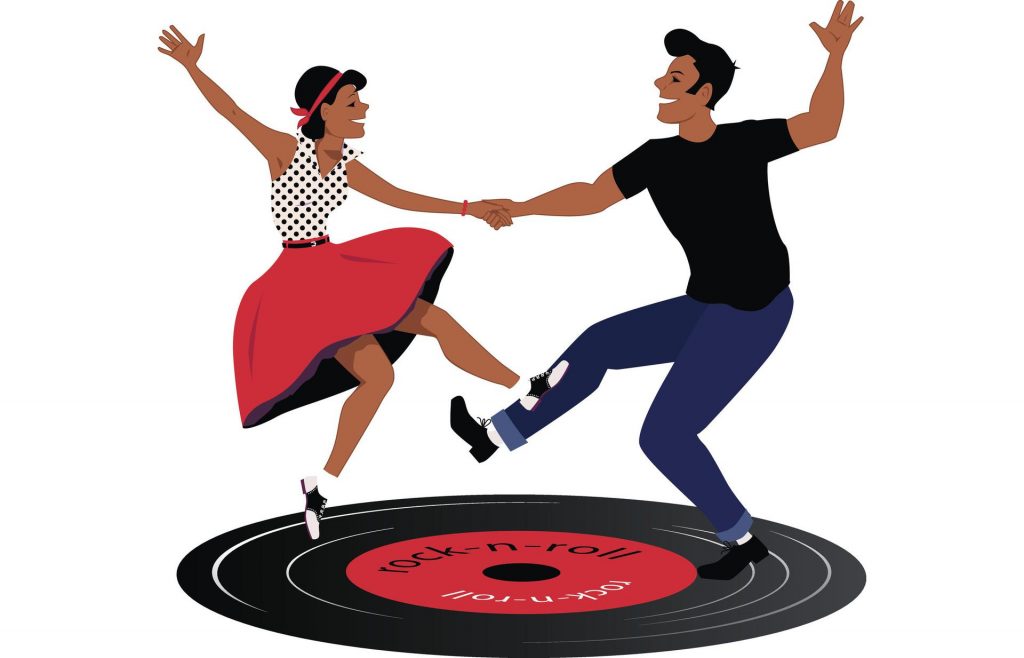
The Stroll
The Stroll, Bandstand early 59
Photo courtesy Library of Congress
One of the most popular dances of the 50s, the Stroll was a dance popularized on American Bandstand.
The stroll was introduced on the show by Chuck Willis. The Stroll is a group dance dance done in two parallel. lines , with boys on one side the girls on the other, facing each other. The basic step is a 12-count movement phrase, which is actually a 6-count phrase simply repeated on the other side. the boys start with the left foot, the girls with the right. beginning with the feet together, the boy's side with a left diagonal step ( count 1)and then with a touch of the left foot as it drags as it drags back into place next to the right (count). Next comes a forward diagonal step out onto to the left (count 3) followed by a step onto the right that as it cuts tightly behind the left (count 4) The phrase finishes with a step to the side with the left foot (count 5) and a tough, next to it with the right (count 6). The entire sequence is then repeated with the right foot
The entire sequence is then repeated with the right foot
The other element is the solo stroll by each couple. While the two lines perform the basic step, a couple formed from the boy and girl at the far end of the line ( the end that is towards the boy's right and the girl's left) dances together down the middle. The pair can then take the opportunity to improvise their steps or execute a forward traveling variation of the basic Stroll step. When the couple reaches the end of the lane, they split apart and replace the boy and girl at the end of the line., as a new couple forms at the opposite end.
How to Stroll
The basic move for the Stroll gradually moves the dancer, foot by foot, up the line until he gets to the very front, at which point the two partners abandon the basic and do their own "shine" dance down the center aisle with everyone clapping and appreciating them.
For Him
Step forward on your left foot. Slide your right foot up even. Move your right foot to the right. Slide your left foot over to meet it. Step back on your right foot.
Move your right foot to the right. Slide your left foot over to meet it. Step back on your right foot.
Slide your left foot back to meet it. Move your left foot to the left. Slide your right foot over to meet it and return to the original position.
For Her
Step back on your right foot. Slide your left foot back even. Move your left foot to the left. Slide your right foot over to meet it. Step forward on your left foot.
Slide your right foot forward to meet it. Move your right foot to the right. Slide your left foot over to meet it and return to the original position..
The Walk
Was done in a Conga line-like formation, with dancers one behind another, holding on to the waist of the person in front. It went around the room with a two-action movement first to one side than the other. the movement involved throwing out the same leg and arm, as the torso opened up to the side and chugging forward slightly on the other leg as the working leg returned to its original position
The Cha-lypso
The Cha-lypso was a combination of the Cha-Cha and the Calypso. Near the end of the '50s, American Bandstand came up with a name for the simplified Cha-Cha steps the teens were dancing to swing rhythms: the Chalypso. While Calypso songs were generally danced to with a mix of Rumba and Samba steps. Somewhere down the line, it got watered down and reinterpreted as simplified cha-cha by the youth. This fun and easy dance style was ideal for dancing to mid-tempo swing songs - not too fast, not too slow.
Near the end of the '50s, American Bandstand came up with a name for the simplified Cha-Cha steps the teens were dancing to swing rhythms: the Chalypso. While Calypso songs were generally danced to with a mix of Rumba and Samba steps. Somewhere down the line, it got watered down and reinterpreted as simplified cha-cha by the youth. This fun and easy dance style was ideal for dancing to mid-tempo swing songs - not too fast, not too slow.
The Bop
The Bop dance style derives from the Jitterbug and East Coast Swing in the 1950s, but it is not to be confused with the Bop a Lindy -based partner dance that was done by all ages in the black community started in the 40s. The 'Bop' term actually comes from Be-Bop, those fabulous jazzy tunes from the '40s; however, it was not danced to Be-bop but to much faster rockabilly, and rock 'n' roll songs of the era like those of Gene Vincent.
The Bop was the first rock and roll dance introduced on American Bandstand in the summer of 1957 by a visiting teenagers from California.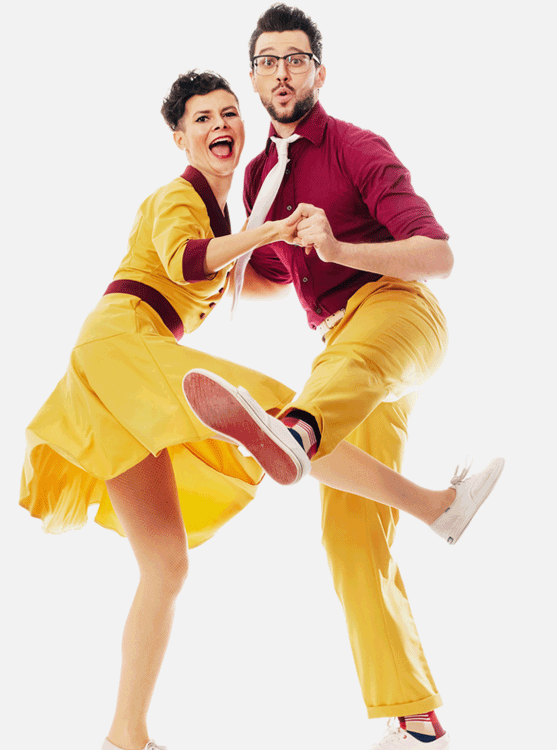 The Bop used many of the same moves as swing, including partners moving around each other, but was usually done with almost no touching and much, much faster. The Bop's more carefree, Charleston jumpy-like moves and independent dance style also encouraged dancers to go solo.
The Bop used many of the same moves as swing, including partners moving around each other, but was usually done with almost no touching and much, much faster. The Bop's more carefree, Charleston jumpy-like moves and independent dance style also encouraged dancers to go solo.
Dancing the bop entailed jumping up and down as if on a pogo stick and grinding your heels into the floor each time you landed. It's done with a partner but without holding hands. the bop was a dance from southern California that was being done gene Vincent's Be-Bop-A-Lula
The Philly Bop consisted of a basic jitterbug like step with a breakaway that allowed the partners to improvise steps. The partners stayed together musically by maintaining the rhythm and basic step. As the dance went on there were transistions back and forth between the basic step and the improvisational breakaways. Hence this dance was called the Bop.
The Twist
Photo from 1961 movie Hey, Lets Twist
Photo courtesy Paramount Pictures/Photofest
Like virtually all American dances, the Twist has it's origins in black culture.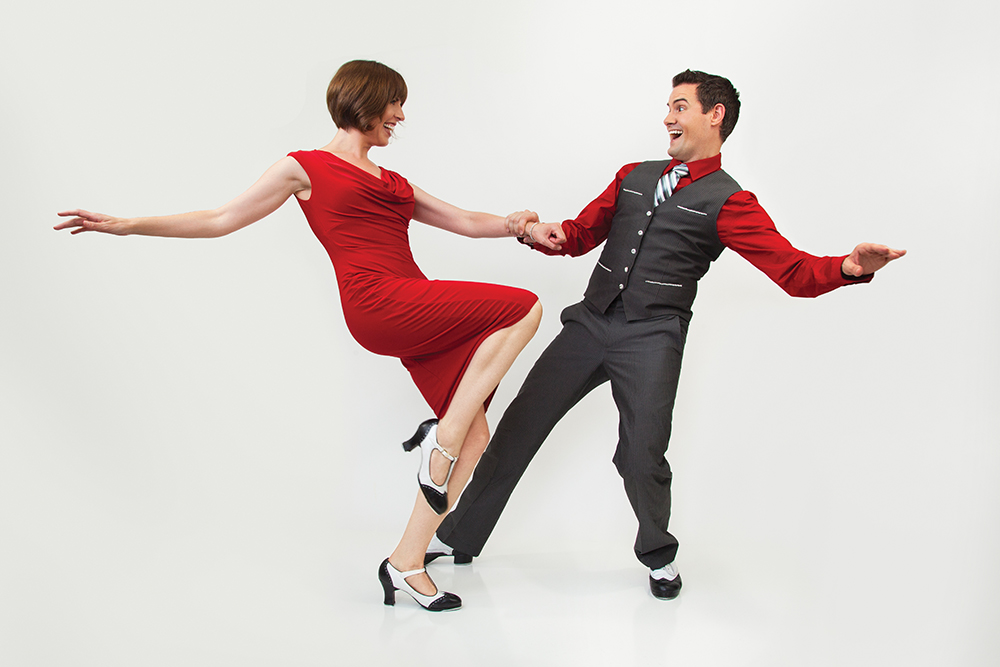 the Twist that became that became a sensation was an altered version of the original dance. The Twist was actually a combination of modifications of two earlier Ballard songs who teens danced to with torso twisting motions. According to Ballard, the dance was derived from the spontaneous twisting motions that his band were doing while playing their instruments They'd Twist their bodies while they would also lift one of their legs in the air. It was these observations that inspired Ballard to write a song about doing the Twist.
the Twist that became that became a sensation was an altered version of the original dance. The Twist was actually a combination of modifications of two earlier Ballard songs who teens danced to with torso twisting motions. According to Ballard, the dance was derived from the spontaneous twisting motions that his band were doing while playing their instruments They'd Twist their bodies while they would also lift one of their legs in the air. It was these observations that inspired Ballard to write a song about doing the Twist.
The dance that consisted of revolving their hips in quick, half-circle jerks, so their pelvic regions were heaving in time to the music. White teenagers first saw the dance performed at a Ballard concert in Baltimore. From there they took it to various ten dance shows among them American bandstand and the Buddy Dean Dance Show.
There are two difference version of how Clark became aware of the Twist. The first one was that Buddy Deane brought it to Clark's attention. He told of how innovated it was that the teens were dancing to it without touching their partners. That it was sung by Rhythmn and Blues singer Hank Ballard whose songs were fully of rique double entendres.ballard was not the type that clark would have on his show and turned deane down.
He told of how innovated it was that the teens were dancing to it without touching their partners. That it was sung by Rhythmn and Blues singer Hank Ballard whose songs were fully of rique double entendres.ballard was not the type that clark would have on his show and turned deane down.
In Clark's version he claims he saw a black couple doing it on American Bandstand. He descibed what they were doing as " revolving their hips in quick, half-circle jerks, so their pelvic regions were heaving in time to the music."
Initially Clark would't allow it to be danced on the show because it was "too sugggestive" for his show, but white teenagers were fascinated by it and started imitating it. Clark eventually gave-in to them.
Clark thought it was 'too black' but once he committed to promoting it he went to his friend Bernie Lowe the owner of Cameo-Parkway Records and asked for a cover version. The singer was to be the mild mannered, pudgy singer Ernest Evans who Clark's wife re-named him Chubby Checker.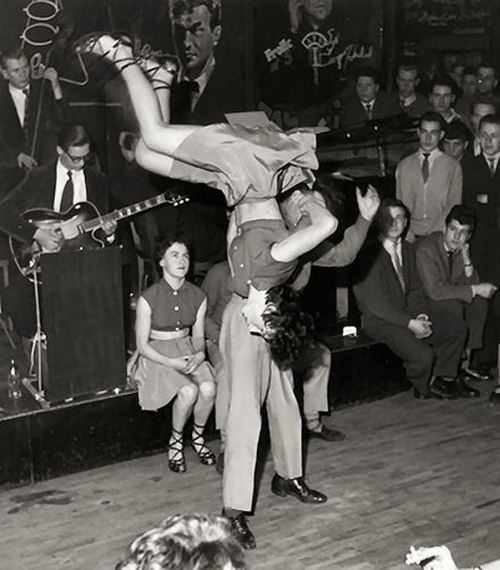 "The Twist" was the beginning explosion of dance oriented records. "The Twist" is unique in rock and roll history, becoming a #1 hit on two separate occasions (September 1960 and January, 1962). The song and dance became a national fad, spinning off countless twist records for Checker and others
"The Twist" was the beginning explosion of dance oriented records. "The Twist" is unique in rock and roll history, becoming a #1 hit on two separate occasions (September 1960 and January, 1962). The song and dance became a national fad, spinning off countless twist records for Checker and others
Checker doing the Twist
Photo courtesy Photofest
Checker's Twist had no leg lifts but danced with both feet on the ground., one slightly ahead of the other and with knees bent. pretend you are wiping your bottom and putting out a cigarette with both feet. some jerky movements of the arms keeping waist level moving in opposition to your partner, occasionally lift one arm overhead and gesturing as swing a lasso.
Peppermint Lounge circa 1961
photo courtesy Bettmann/CORBIS
Unlike the other rock and roll dances of the fifties, which were signs of teen culture the Twist crossed over to the adults.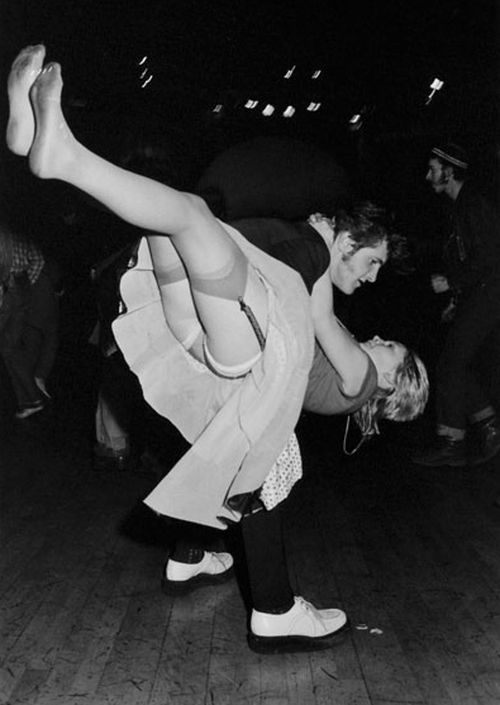 You could find it being done at places such as the New York nightclub Peppermint Lounge. House dancers were the Dolly Sisters who would later become better known as the Ronettes. The House band The Starlighters contained the core of musicians that would evolve to be come first the Young Rascals and later simply the Rascals. There you could find both celebrities as well as the working class doing the Twist.
You could find it being done at places such as the New York nightclub Peppermint Lounge. House dancers were the Dolly Sisters who would later become better known as the Ronettes. The House band The Starlighters contained the core of musicians that would evolve to be come first the Young Rascals and later simply the Rascals. There you could find both celebrities as well as the working class doing the Twist.
Rock and Roll Dance - Rock-N-Rol.
Rock and roll (from the English rock and roll or rock 'n' roll - "swing and roll" - "swing and roll" - a genre of popular music that became widespread in the United States in the late 1940s and early 1950s.
Rock and Roll Dance
Rock and Roll ( Rock-N-Roll ) is a fast dance, which is characterized by free relaxed movements. Also, rock and roll is also music that appeared in the late 50s of the last century in the United States and became the progenitor of modern rock music.
Also, rock and roll is also music that appeared in the late 50s of the last century in the United States and became the progenitor of modern rock music.
Along with the music came the dance rock and roll .
Legendary singers and musicians such as Elvis Presley can rightfully be considered the founders of this dance-music style , Jerry Lee Lewis , Rolling Stones group .
Rock 'n' roll music was first played by black Americans, but over time more and more young white people began to take an interest in it.
Rock and roll has become a form of rhythm and blues. At first, this kind of music and dance was not accepted by the public, they even met it with hostility. Rock and roll was perceived as a communist contagion.
This dance and music was considered characteristic of the black population of the states.
But in the 50s of the last century, attitudes towards blacks began to change around the world due to their struggle for social rights.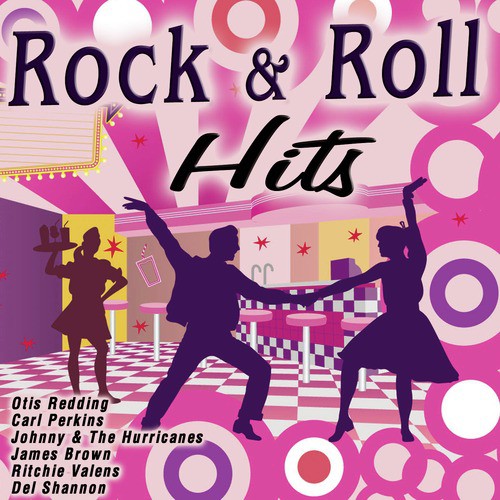 The music of the African American population began to flood the consumer market. White performers had only to master this new music and dance.
The music of the African American population began to flood the consumer market. White performers had only to master this new music and dance.
The youth liked this dance very much. Rock-n-roll did not limit the couple's movements, the partner, as it were, constantly throws the partner away from himself, and she always comes back. This was a welcome change from the usual conservative dances with their strict, defined steps. The youth of the whole world danced this energetic and incendiary dance.
Soon the whole world danced it, and middle-aged people also fell in love with it.
Knowing how to dance rock and roll has become fashionable and prestigious.
This dance also penetrated our country. Soviet youth quickly accepted everything Western, but the authorities did not want this "bourgeois influence of the West." Rock and roll at first was even banned in the USSR. Even jeans and rock hairstyles were banned. Jeans have evolved from being just comfortable workwear to being the most fashionable item that was unobtainable.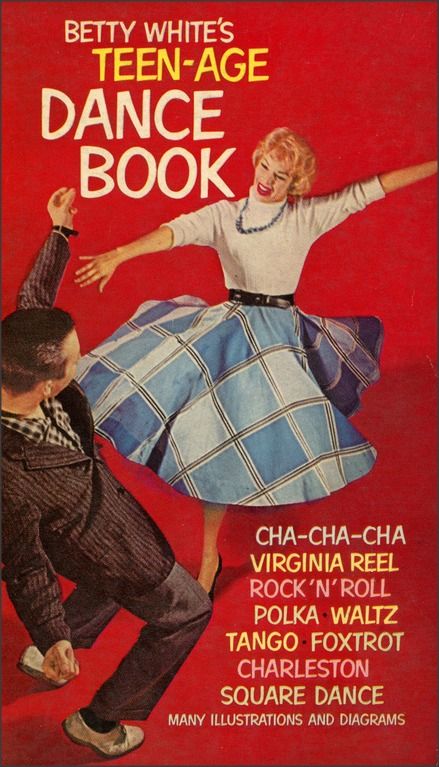 Jeans were brought from abroad by fartsovshchik - so called the ancestors of modern merchants.
Jeans were brought from abroad by fartsovshchik - so called the ancestors of modern merchants.
But the beauty and looseness of the dance, the incendiary pace of the music took their toll: rather throughout the country, in all restaurants, rock and roll became the most popular dance.
Dozens of schools began to form to teach this dance. Such schools still exist today. Anyone can visit them.
The dance is replete with many different supports, a fast pace, and therefore professional rock and roll performance requires certain acrobatic skills and training. 9Dance clubs and schools
You're viewing: do_dance_rock-n-rol.html
NewOldUsefulUseless
Page 1 of 1
Write a review
Rock and roll fans can be found in every country in the world.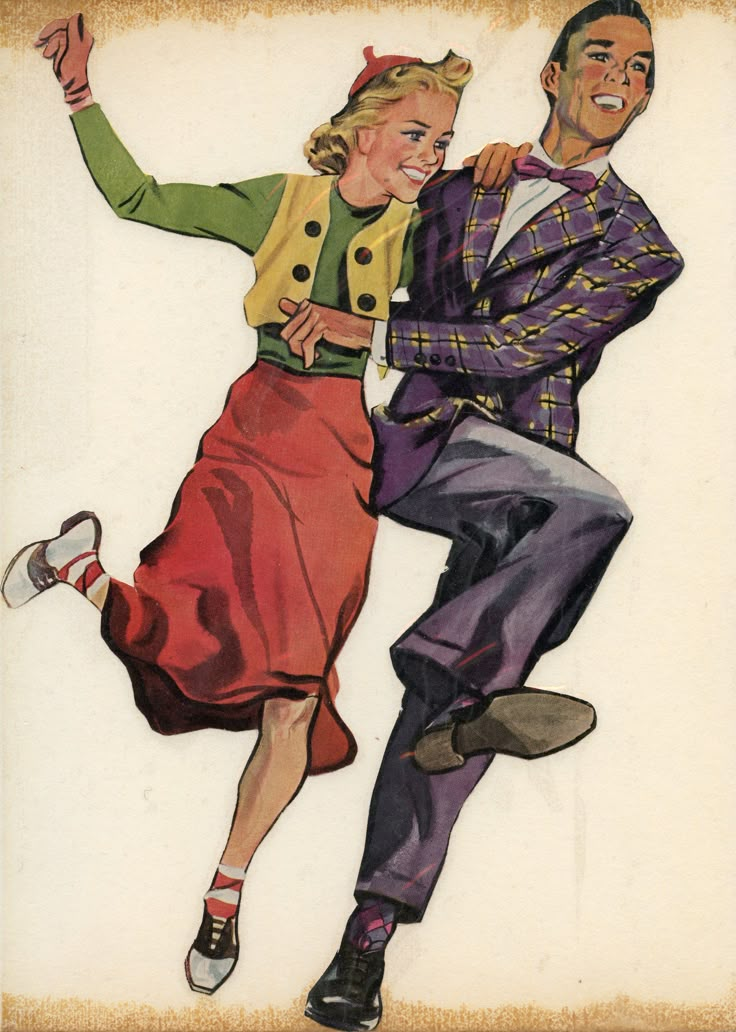 And on April 13 they have a big holiday - they all celebrate World Rock and Roll Day!
And on April 13 they have a big holiday - they all celebrate World Rock and Roll Day!
Rock and roll was born as a combination of many different styles of American music: many musicians, independently of each other, began to mix country, boogie-woogie and rhythm and blues in its accelerated variation in their works.
You won't believe it, but you can play rock and roll without any musical instruments! Every year, an unusual championship is held in Finland, which attracts amateur and professional musicians to compete in playing the "air guitar"! Yes, yes, this is not a joke! There is no game as such - the participant only imitates rock stars, plucking chords on an imaginary guitar. The championship is held in two stages: a performance with a prepared number and improvisation to a melody chosen by the organizers themselves. The jury evaluates the performance technique, charisma and artistry. And the winner of the championship receives a real elite guitar as a prize.
This is interesting:
- Rock and roll means "twirling and spinning.
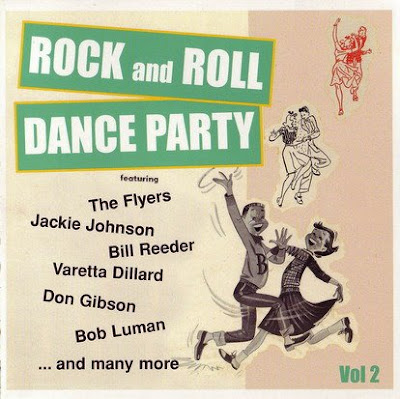 "
" - According to the Guinness Book of Records, the hit "Rock Around the Clock" became the second-best-selling hit in the entire modern history of pop music - 25 million copies of the record were sold.
- On the shores of Lake Erie in Cleveland, the Rock and Roll Fame Museum was opened in 1995. In its shape, the Museum building resembles a bird with outstretched wings - the personification of freedom.
- The legendary Elvis Presley is listed in the Guinness Book of Records as the musician who released the most hit albums (97 out of 150 albums).
One of the most popular and incendiary dances does not lose its popularity even today. Many children and adults want to learn this dance. Of course, YouTube will become an indispensable assistant in mastering rock and roll, where you will find not only tips for beginners, but also recordings of the performances of champion couples. Regular training - and the result will not keep you waiting.
There is another kind of rock and roll - acrobatic.